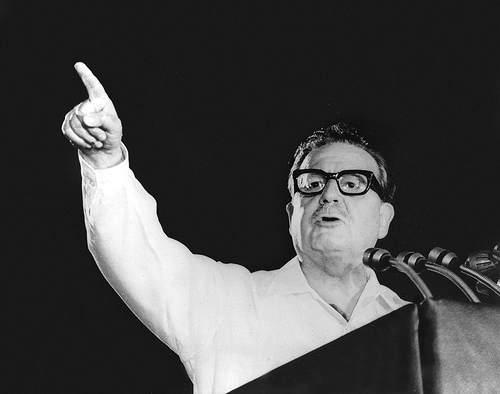Chilean coup d'état

Salvador Allende, an avowed Marxist, becomes president of Chile after being confirmed by the Chilean congress. For the next three years, the United States would exert tremendous pressure to try to destabilize and unseat the Allende government. Allende’s election in 1970 was his third attempt at the presidency. In 1958, and again in 1964, Allende had run on a socialist/communist platform. In both elections, the United States government (as well as U.S. businesses such as International Telephone and Telegraph (ITT), which had significant investments in Chile) worked to defeat Allende by sending millions of dollars of assistance to his political opponents. In 1970, the United States again worked for Allende’s defeat, but he finished first out of the four candidates. However, since he had garnered less than 40 percent of the popular vote, the final decision had to be made by the Chilean congress. The United States worked feverishly to derail Allende’s selection but the election was upheld on October 24, 1970. Allende immediately confirmed the worst fears of U.S. officials when he extended diplomatic recognition to North Vietnam, North Korea, and Cuba, and also began to take action to nationalize the holdings of U.S. corporations in Chile, notably ITT and Kennecott Copper. U.S. officials also believed that Allende was supporting revolutionary activities in Latin America and viewed him as a significant threat to hemispheric security and U.S. economic interests in Chile. Yet, Allende posed an interesting problem. Unlike Castro, he had come to power peacefully and democratically. Thus, the United States could hardly launch a Bay-of-Pigs-like attack on the Allende regime. Undaunted, the administration of President Richard Nixon began to formulate plans to destabilize the Chilean government and see to the removal of Allende. These plans came to fruition in 1973 when a coup by the Chilean military overthrew Allende and assassinated him.
